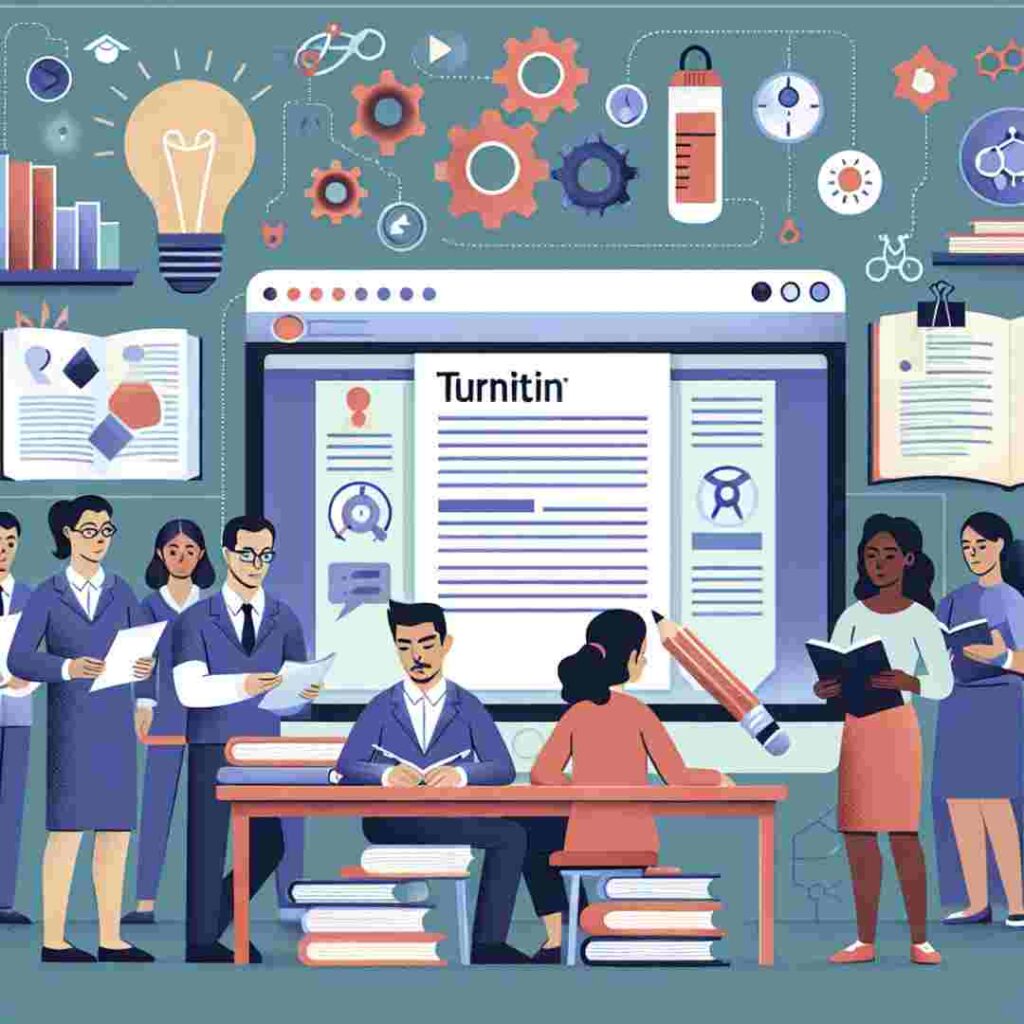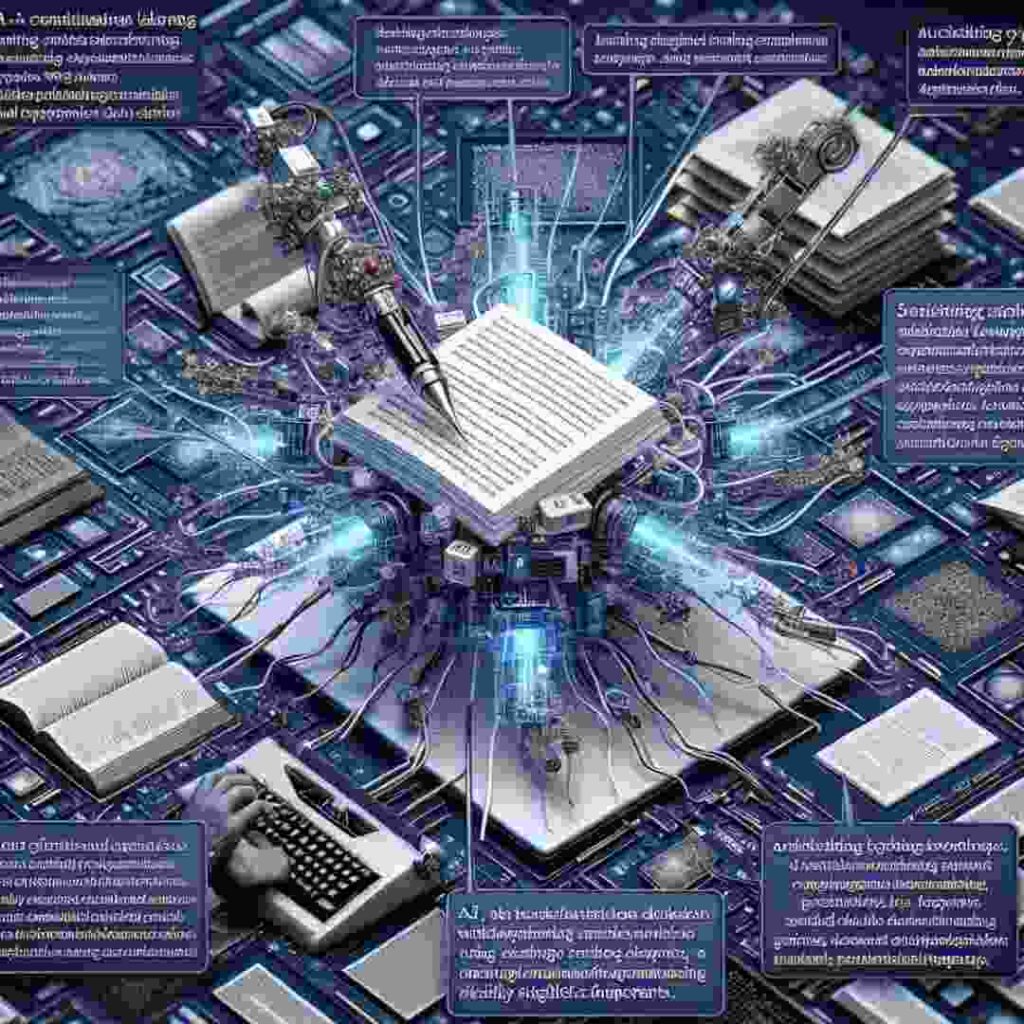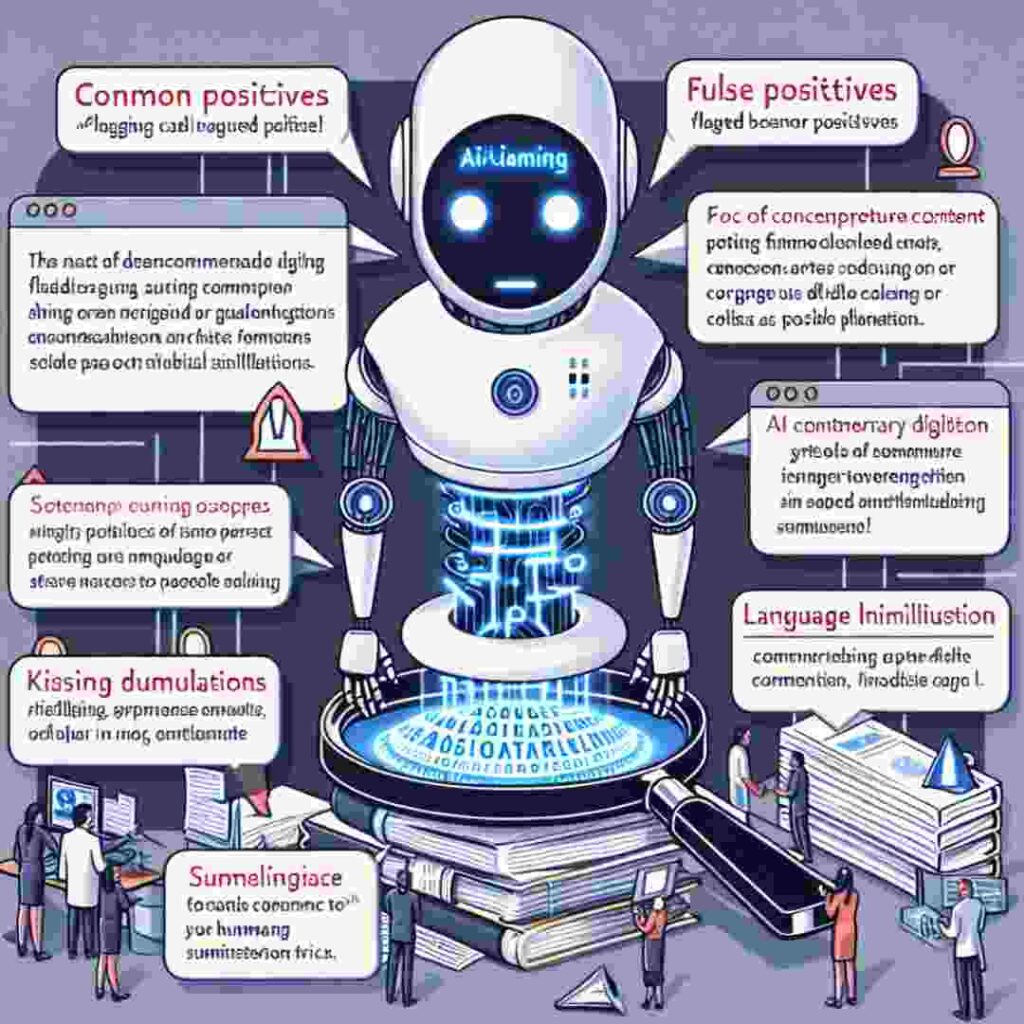Turnitin has long been a cornerstone of academic integrity, ensuring that submitted work is original and untainted by plagiarism. A key component of their technology is the AI-based detection system that scrutinizes conventional similarities and paraphrased content and alterations designed to bypass traditional plagiarism checks. This AI detector employs advanced machine learning algorithms to analyze writing style, language patterns, and structural elements, making it difficult for copy-paste artists and clever manipulators to get past its watchful eye. By continuously updating its algorithms with data from diverse sources worldwide, Turnitin’s AI detector remains at the forefront of technological innovation, helping educators maintain a fair and honest academic environment.
What is Turnitin and Its Purpose?

Turnitin is a sophisticated online tool widely used by educational institutions to promote academic integrity. Its primary purpose is to assist educators in identifying plagiarism in students’ work, thereby fostering a culture of honesty and originality in academia. By providing comprehensive reports highlighting potential instances of copied content, Turnitin is a valuable resource for instructors and students. Instructors can use the insights gained from these reports to guide students toward more original thinking and better research practices. Meanwhile, students can benefit from Turnitin through self-assessment, allowing them to understand and improve their use of sources. Beyond plagiarism detection, Turnitin’s features also support educators in grading and providing feedback, making it a versatile tool in modern education.
The Rise of AI in Academic Integrity

Integrating AI technology into academic integrity strategies represents a significant shift in higher education. Institutions increasingly rely on AI systems to detect plagiarism and analyze patterns that may indicate academic misconduct. These sophisticated tools can assess a broad spectrum of data quickly and effectively, combing through vast databases to identify potential breaches in academic honesty. AI enhances the capability of traditional plagiarism detection by recognizing complex forms of content manipulation, ensuring that even subtle attempts to deceive the system are identified. This technological evolution underscores a commitment to upholding academic ethical standards while challenging educators and students to engage in deeper learning processes. As AI evolves, its role in safeguarding academic integrity will become even more pivotal, further transforming the education landscape.
How Turnitin’s AI Detector Works

Turnitin’s AI detector functions through a sophisticated interplay of machine learning algorithms designed to analyze submitted academic work meticulously. At its core, the system begins by dissecting a document into readable data that it can compare against a vast repository of existing content. This includes academic publications, web pages, and previously submitted student work. The first step involves examining the document for direct text matches and textual similarity, employing cutting-edge natural language processing techniques to identify even nuanced paraphrasing or synonyms. Beyond surface-level analysis, the AI scrutinizes writing style, syntax, and linguistic patterns, discerning the likely authorship of the work through stylistic fingerprints. This deep analysis helps differentiate between genuine original work and subtly manipulated content. By continuously learning from a myriad of global sources, the AI detector hones its ability to identify contextually relevant similarities and complex forms of rewriting, ensuring that the integrity of each submission is thoroughly evaluated to support academic honesty.
Key Features of the AI Detector
Turnitin’s AI detector is equipped with several key features that make it a robust tool for maintaining academic integrity:

- Its advanced similarity detection goes beyond mere text matching. It employs natural language processing to catch subtle rewordings and synonyms, ensuring comprehensive coverage.
- The detector’s stylistic analysis assesses the writing style and linguistic patterns to generate a unique ‘style fingerprint’ for each author. This capability makes it easier to identify discrepancies that may indicate potential misconduct.
- The system boasts a vast database of sources, which includes an extensive collection of academic papers, websites, and previous submissions, enabling it to detect overlapping content with high precision. The AI detector also features continuous learning capabilities, adapting algorithms based on newly acquired data to remain attuned to emerging trends in manipulative content strategies.
- The user-friendly reporting interface provides educators with detailed insights and visualizations, simplifying reviewing and addressing flagged content.
These features collectively strengthen Turnitin’s position as a leading tool in upholding academic honesty.
Benefits for Educators and Institutions

Implementing Turnitin’s AI detector substantially benefits educators and academic institutions alike. For educators, this tool significantly reduces the time and effort required to assess student submissions for potential plagiarism or academic misconduct, allowing them to focus more on instructional duties and personalized student support. The detailed reports generated by the platform provide educators with clear insights into the originality of student work, aiding them in providing constructive feedback and guiding students toward more credible academic practices. Institutions benefit from enhancing their academic integrity policies, as Turnitin helps uphold a culture of honesty and ethical scholarship. By ensuring that all work submitted meets rigorous standards of originality, schools and universities can maintain their reputations for academic excellence. Moreover, the analytics and data insights provided by Turnitin allow institutions to identify trends in plagiarism and address them proactively, thus reinforcing their commitment to ethical academic behavior and comprehensive educational outcomes.
Limitations of the AI Detection Tool

Despite its advanced capabilities, Turnitin’s AI detection tool has certain limitations that educators and institutions must know. One notable challenge is the potential for false positives, where the system may flag similar content that is not plagiarized, such as common phrases or legitimate quotations. This necessitates human oversight to differentiate between intentional misconduct and acceptable academic practices. Additionally, the AI may need help detecting content from newer digital sources not yet included in its database, potentially overlooking relevant similarities. There’s also the concern of linguistic diversity; the tool’s proficiency may vary across different languages or dialects, which might impact its effectiveness in non-English submissions.
Furthermore, relying on AI for academic integrity assessments could discourage the development of critical skills in students, such as paraphrasing and citation abilities, by creating a dependency on technology rather than fostering educational growth. Lastly, privacy concerns around data storage and usage can arise, as student work is part of a vast database, requiring institutions to ensure compliance with data protection regulations. These limitations highlight the importance of integrating AI tools with comprehensive pedagogical strategies to balance technological efficiency and educational integrity.
Comparisons with Other Plagiarism Detectors
When comparing Turnitin’s AI-powered plagiarism detector to other tools in the market, several distinctions become apparent. One of the main differentiators is Turnitin’s extensive database, encompassing a broader range of academic publications, websites, and previously submitted works than many competitors. This vast repository allows for a more thorough detection of potential plagiarism. Turnitin’s advanced natural language processing capabilities also offer a heightened nuance in detecting rephrased content and synonyms, setting it apart from simpler keyword-matching technologies used by other detectors.

Moreover, Turnitin’s stylistic analysis feature provides insight by analyzing writing patterns to establish an author’s stylistic fingerprint. This allows the tool to identify deviations that may suggest academic misconduct. In contrast, some other plagiarism detection services may not include this feature, focusing solely on verbatim content matching.
However, it is essential to note that Turnitin’s comprehensive approach also comes with higher complexity and potential for false positives compared to straightforward tools that provide a quick and basic check. Meanwhile, some competitors might integrate better with diverse linguistic sources, offering more accurate results for non-English submissions. While Turnitin remains a leader in maintaining academic integrity due to its robust capabilities, institutions should weigh the feature set and limitations of various tools to find the most suitable option for their specific needs.
User Feedback and Experience Insights
User feedback on Turnitin’s AI detection tool highlights a mix of appreciation and areas for improvement. Many educators applaud the tool for its efficiency in scanning large volumes of student submissions, which significantly reduces their workload. The detailed reports generated are valued for providing clear, actionable insights on potential plagiarism, helping educators to guide students more effectively towards responsible scholarly behaviors. Institutions also appreciate the robust database and advanced detection algorithms, which help uphold academic integrity and support their reputational standards.
However, users have expressed concerns about false positives, which sometimes lead to unnecessary investigations into student work that is not plagiarized. This necessitates additional time and effort to verify flagged items. Some students have reported anxiety over being unfairly penalized for overlapping content that arises from common phrases or general knowledge. Furthermore, users have also mentioned the wish for improved compatibility with non-English submissions, suggesting that more linguistic diversity in the tool’s capabilities would broaden its accuracy and application.
Overall, while Turnitin remains a valuable resource in the academic community, ongoing advancements and user-driven improvements could enhance its effectiveness and user experience, ensuring it continues to meet the diverse needs of educators and students globally.
Conclusion: The Future of Academic Integrity
As technology evolves, the academic integrity landscape faces challenges and opportunities. Integrating AI-powered tools like Turnitin signifies a pivotal step towards more efficient and comprehensive plagiarism detection. However, the future of academic integrity will depend on how well these technological solutions are integrated with human oversight, ethical practices, and educational strategies. Institutions must balance the strengths of advanced detection tools with a commitment to cultivating students’ skills in research, citation, and ethical scholarship. In addition to addressing AI-related limitations such as false positives and language diversity, there is a need for academia to engage in ongoing dialogue and collaboration to anticipate new patterns of academic misconduct. By fostering a culture that values originality and accountability, the academic community can ensure that integrity remains a cornerstone of education in the digital age.









